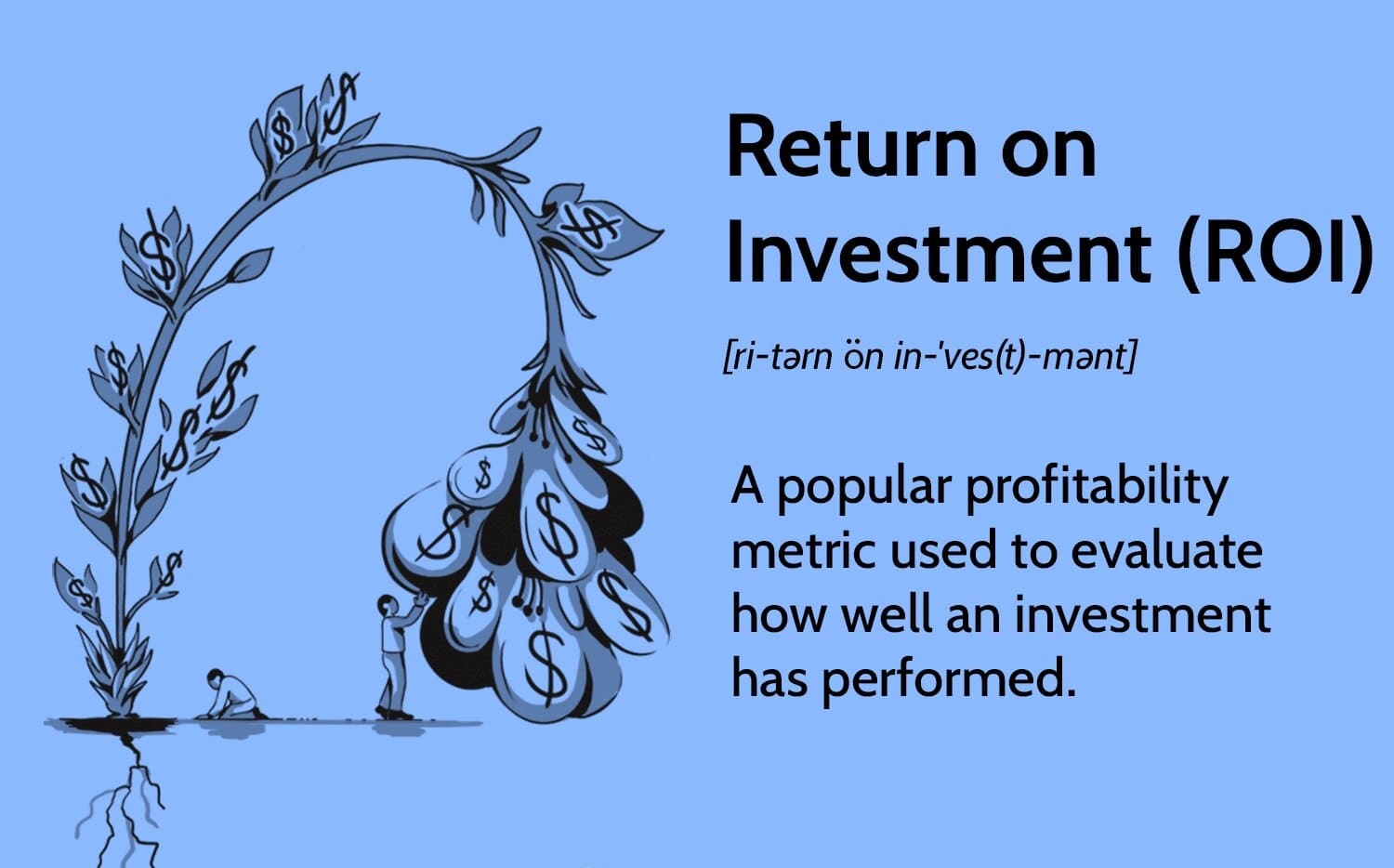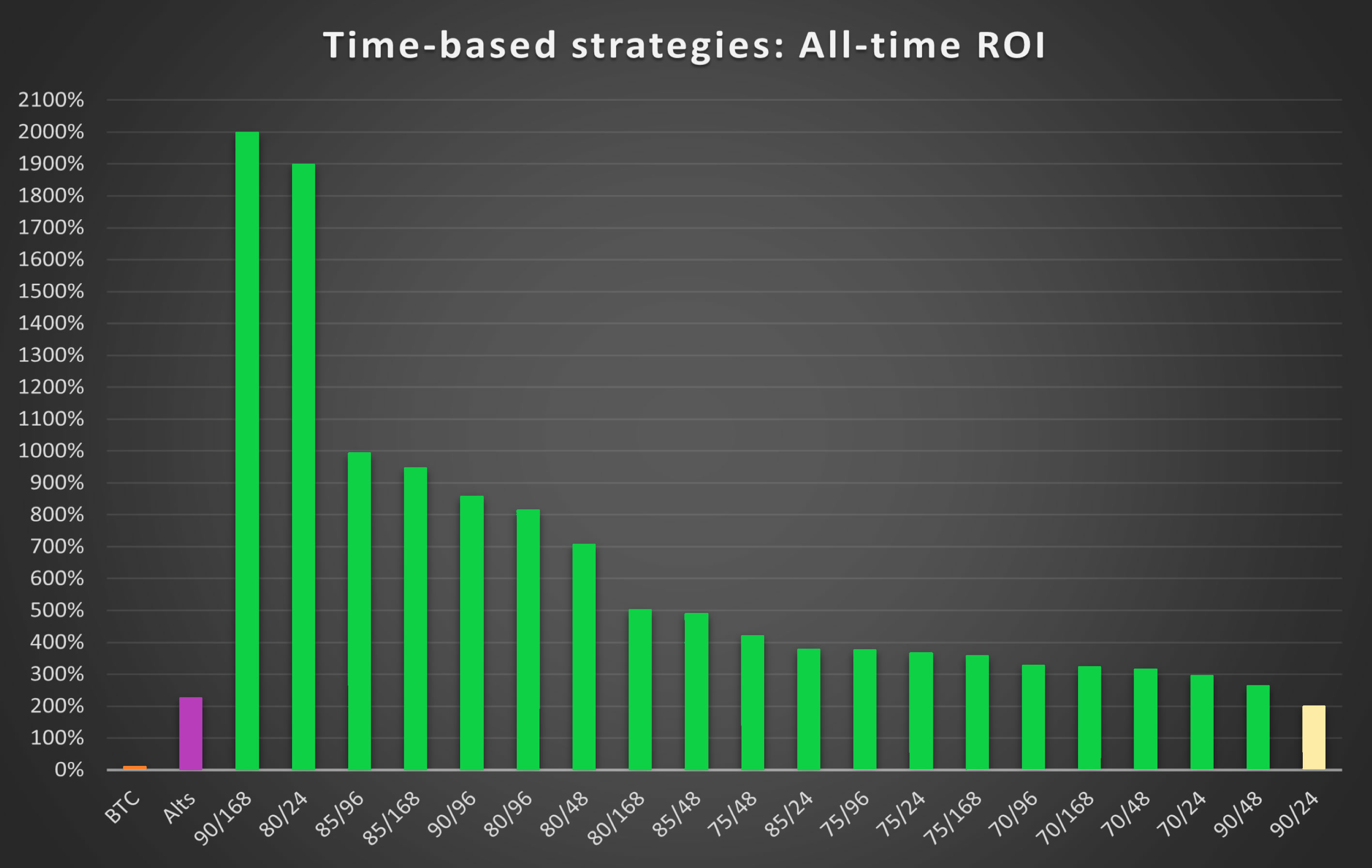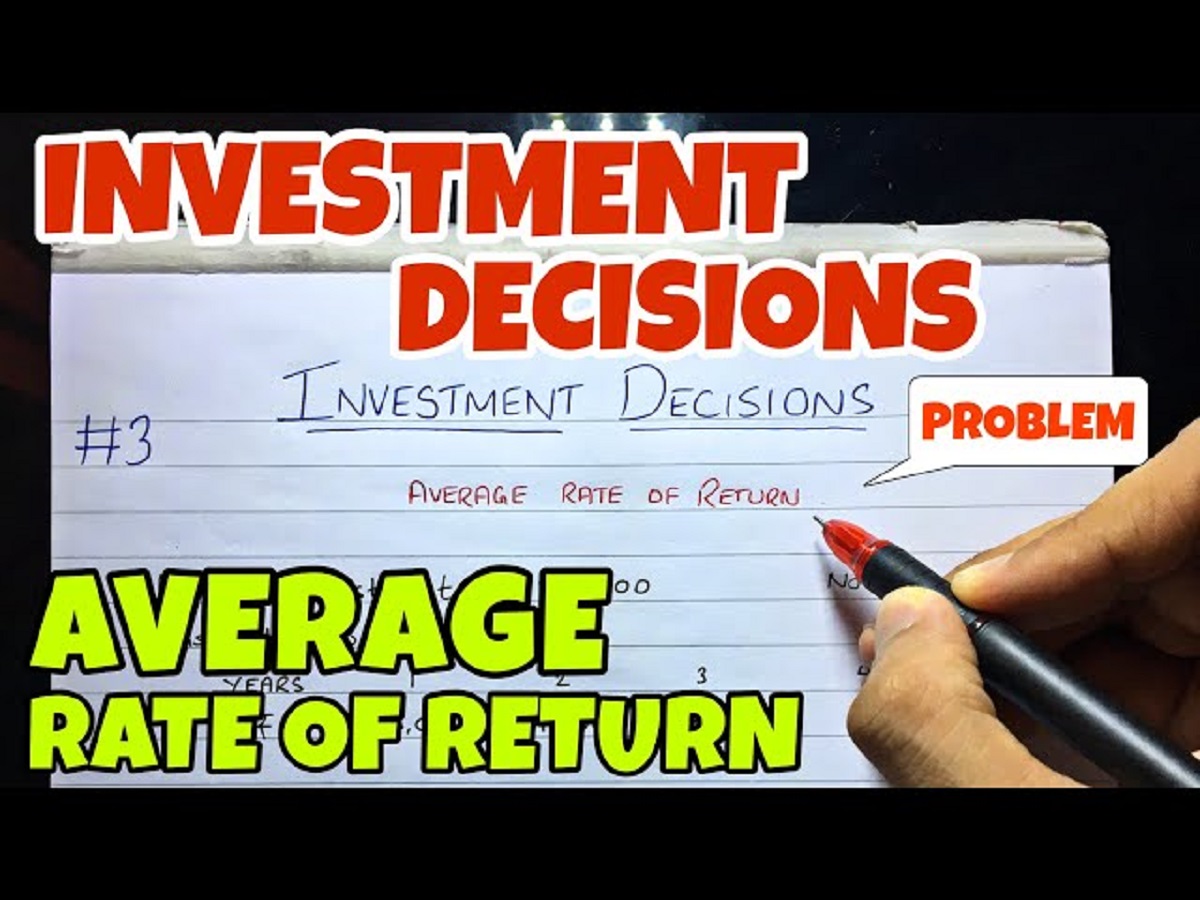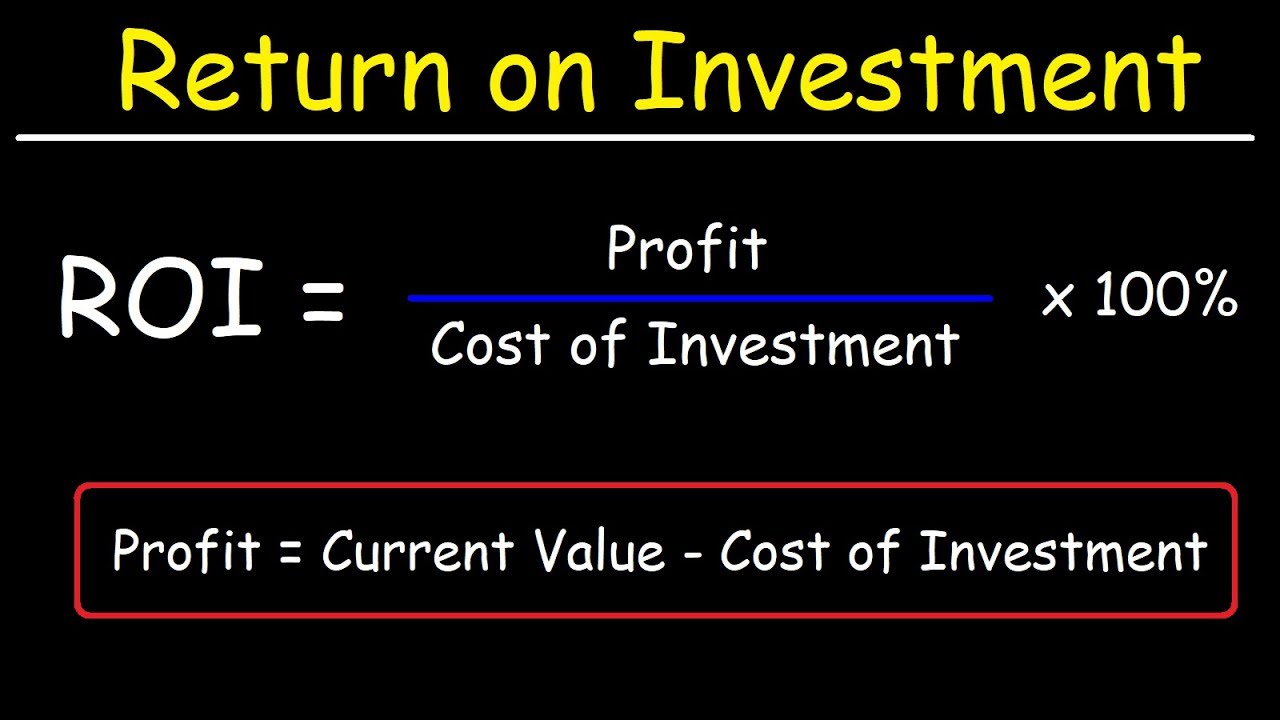Introduction
Investing in various opportunities such as stocks, bonds, and real estate can be a lucrative way to grow wealth over time. However, along with the potential for returns, there is always an element of risk. Understanding and managing risk is crucial for investors to make informed decisions and protect their investments.
Risk, in the context of investments, refers to the possibility of losing some or all of the initial capital or not achieving the expected returns. It is an inherent part of the investment process and can arise from various factors such as economic conditions, market fluctuations, and specific risks associated with different types of investments.
The relationship between risk and return is a fundamental principle in finance. Generally, investments with higher potential returns tend to carry higher levels of risk. This is because higher risk investments typically require investors to take on additional uncertainty and potential volatility. On the other hand, investments with lower risk usually offer lower potential returns.
There are several types of risk that investors need to be aware of when making investment decisions. Market risk is the risk of loss due to overall market downturns. Credit risk is the risk of default by borrowers. Inflation risk refers to the potential loss of purchasing power due to inflation eroding the value of money. Liquidity risk is the risk of not being able to sell an investment quickly or at a fair price. Political risk encompasses the potential impact of political events or policies on investments.
Assessing and measuring risk is an essential step in investment management. Various quantitative and qualitative methods can be used to evaluate the potential risk associated with an investment. Diversification is a commonly used risk management strategy that involves spreading investments across different asset classes and sectors to reduce exposure to a single risk factor.
Managing risk in investments involves a combination of careful analysis, research, and strategic decision-making. Understanding personal risk tolerance, setting realistic expectations, and continuously monitoring and reviewing the investment portfolio are key components of effective risk management. The time horizon, or the length of time the investor plans to hold the investment, also plays a significant role in managing risk.
In this article, we will explore the different types of risk in investments, how to assess and measure risk, and strategies for managing risk effectively. By understanding the relationship between risk and return, investors can make informed choices that align with their financial goals and risk tolerance.
Definition of Risk
Risk, in the context of investments, refers to the potential for loss or uncertainty associated with an investment. It encompasses the possibility of not achieving the expected returns or losing a portion or all of the initial capital invested. Understanding and managing risk is a crucial aspect of investment decision-making.
Investment risk can arise from various factors, including economic conditions, market fluctuations, and specific risks associated with different types of investments. It is important for investors to have a clear understanding of the risks involved in order to make informed investment choices.
When it comes to investing, risk is an inherent part of the process. The potential for higher returns often comes with a higher level of risk. In other words, investments that offer the possibility of substantial gains usually carry a greater degree of uncertainty and volatility.
There are different types of risk that investors need to be aware of. Here are some common ones:
- Market Risk: This is the risk of loss due to overall market downturns. Factors such as economic conditions, political events, and investor sentiment can significantly impact the value of investments.
- Credit Risk: This refers to the risk of default by borrowers. When investing in bonds or lending money, there is always a possibility that the borrower may fail to repay the principal or interest as agreed.
- Inflation Risk: Inflation risk is the risk of loss of purchasing power over time. Inflation erodes the value of money, and if the investment returns do not outpace inflation, the investor may experience a decrease in real wealth.
- Liquidity Risk: This refers to the risk of not being able to sell an investment quickly or at a fair price. Investments that lack liquidity may limit an investor’s ability to access funds when needed.
- Political Risk: Political events, policies, or changes in government can have a significant impact on investments. Political risk can vary from country to country and may affect specific industries or sectors.
Understanding the different types of risks is essential in evaluating investments and managing portfolios effectively.
To assess and measure risk, investors use various quantitative and qualitative methods. These include analyzing historical data, conducting thorough research, and employing risk management tools and models. It is important to note that risk assessment is not an exact science and involves a certain degree of uncertainty.
Overall, risk is an integral part of investing, and investors need to consider it when making decisions. By understanding the definition of risk and its various forms, investors can make more informed choices, manage their portfolios effectively, and work towards achieving their financial goals.
Relationship Between Risk and Return
In the world of investments, the relationship between risk and return is a fundamental concept that every investor should understand. Generally, investments with higher potential returns tend to carry higher levels of risk, while investments with lower risk typically offer lower potential returns.
This relationship is based on the premise that investors require compensation for taking on additional uncertainty and potential volatility associated with riskier investments. In other words, the potential for higher returns is offered as an incentive to entice investors to assume greater risk.
Investments can be broadly classified into two categories: risk-free and risky. Risk-free investments, such as government-backed bonds or savings accounts, offer a guaranteed return over a specified period. The return on these investments is relatively low but comes with minimal risk. On the other hand, risky investments, such as stocks or real estate, offer the potential for higher returns but carry a higher level of risk.
When investors evaluate potential investment opportunities, they need to consider their risk tolerance. Risk tolerance refers to an investor’s ability to withstand fluctuations and potential losses in the value of their investments.
Some investors have a higher risk tolerance and are willing to accept higher levels of volatility and uncertainty in pursuit of potentially greater returns. They may be more comfortable investing in stocks, which historically have shown higher returns over the long term but also experience greater fluctuations in value.
On the other hand, investors with a lower risk tolerance may prioritize capital preservation and opt for safer investments such as bonds or other fixed-income securities. These investments generally offer more stability but may have lower returns compared to riskier assets.
The trade-off between risk and return is not always linear. There can be variations and exceptions depending on market conditions, specific investment opportunities, and individual circumstances. It is crucial for investors to carefully assess their risk tolerance, investment goals, and time horizon before making investment decisions.
While risk and return are interrelated, it is important to note that higher risk does not automatically guarantee higher returns. Investing involves uncertainties, and there is always the potential for losses, regardless of the level of risk taken.
Investors should aim to strike a balance between risk and return based on their individual circumstances. Diversification, which involves spreading investments across different asset classes and sectors, can be an effective risk management strategy. By diversifying, investors can potentially reduce risk while still seeking opportunities for returns.
In summary, the relationship between risk and return is a crucial consideration in the world of investments. Understanding this relationship allows investors to make informed decisions, align their investment strategy with their risk tolerance and financial goals, and work towards achieving long-term success in the market.
Types of Risks in Investments
Investing always involves a certain level of risk. It’s important for investors to be aware of the different types of risks associated with investments in order to make informed decisions and manage their portfolios effectively. Here are some common types of risks in investments:
- Market Risk: Market risk, also referred to as systematic risk, is the risk of loss due to overall market downturns. It arises from factors such as economic conditions, geopolitical events, and general investor sentiment. Market risk affects the value of all investments in the market, regardless of their specific attributes.
- Credit Risk: Credit risk, also known as default risk, is the risk of loss due to the failure of a borrower to fulfill their financial obligations. This risk is prevalent in investments that involve lending money or investing in fixed-income securities such as bonds. A default by the borrower can result in investors not receiving interest payments or the principal amount invested.
- Inflation Risk: Inflation risk refers to the potential loss of purchasing power over time due to inflation. Inflation erodes the value of money, reducing the real returns on investments. Investments that do not outpace the rate of inflation can result in a decrease in the purchasing power of the investment’s returns.
- Liquidity Risk: Liquidity risk is the risk of not being able to sell an investment quickly or at a fair price. Some investments, such as real estate or certain types of securities, may have limited liquidity. Illiquid investments can prevent investors from accessing their funds when needed or may require offering the investment at a significant discount to attract buyers.
- Political Risk: Political risk encompasses the potential impact of political events or policies on investments. This risk can arise from changes in government, regulations, or geopolitical tensions. Political risk can affect specific industries, sectors, or countries and result in volatility or even loss of investments.
It’s important to note that these risks are not mutually exclusive, and investments can be exposed to multiple types of risks simultaneously. For example, investing in stocks exposes investors to market risk, while investing in bonds carries credit risk.
Evaluating and managing these risks is an essential part of the investment process. This involves conducting rigorous research, diversifying the investment portfolio, and continuously monitoring the investments’ performance and market conditions.
Every investor has a different risk tolerance, and understanding one’s risk appetite is crucial in determining the suitable investment strategy. By being aware of the various types of risks and considering their potential impact, investors can make more informed decisions and strive towards achieving their financial goals.
Market Risk
Market risk, also known as systematic risk or non-diversifiable risk, is a type of risk that affects all investments in the market. It arises from factors that impact the overall market, such as economic conditions, geopolitical events, and changes in investor sentiment.
Investments are subject to market risk because the value of assets can fluctuate due to external factors beyond an investor’s control. When the market experiences a downturn or a negative event, the value of investments can decline, potentially leading to financial losses.
One of the key drivers of market risk is the business cycle. Economic conditions, such as recessions or economic expansions, can have a significant impact on the performance of investments. During periods of economic downturn, investors may experience a decrease in the value of their investments as companies face challenges and profitability declines. Conversely, during periods of economic growth, investments generally perform better.
Geopolitical events can also create market risks. Factors such as political instability, conflicts, trade disputes, or natural disasters can create uncertainty and volatility in the financial markets. These events can cause sudden shifts in investor sentiment, leading to significant fluctuations in stock prices, interest rates, and other investment values.
Investor sentiment plays a crucial role in market risk. Emotions and investor behavior can drive market movements and contribute to market fluctuations. If investors become overly optimistic or pessimistic, it can lead to market bubbles or crashes. Market risk is closely related to investor psychology, collective market sentiment, and the concept of herd mentality.
Managing market risk is challenging because it is pervasive and affects all investments to some extent. Although market risk cannot be eliminated entirely, investors can employ risk management strategies to mitigate its impact. One such strategy is diversification, which involves spreading investments across different asset classes, sectors, and geographic regions. By diversifying, investors reduce the impact of market risk on their overall portfolio, as different investments may perform differently in response to market conditions.
Additionally, investors can monitor and analyze market indicators and economic data to make better-informed investment decisions. Staying updated on market trends, assessing risk appetite, and having a long-term investment horizon can also help navigate market risk.
It’s important to note that market risk affects every investor, regardless of their level of expertise or experience. Understanding and evaluating market risk is essential to make informed investment decisions, manage portfolio risk, and strive for long-term financial success.
Credit Risk
Credit risk, also known as default risk, is a type of risk that arises from the possibility of a borrower failing to fulfill their financial obligations. It is a significant consideration for investors who lend money or invest in debt instruments such as bonds, loans, or credit derivatives.
When an individual, company, or government entity borrows money, there is always a chance that they may not be able to repay the borrowed amount or meet the agreed-upon interest payments. This can occur due to various reasons, such as deteriorating financial conditions, economic downturns, or unexpected events that impact the borrower’s ability to generate sufficient cash flow.
Credit risk can be categorized into two main types:
- Default Risk: Default risk refers to the risk of a borrower failing to meet their contractual obligations, including non-payment of interest or principal amount. In the case of bonds, default usually means the inability of the issuer to make timely interest or principal payments to bondholders. Default risk is particularly relevant when investing in corporate bonds or countries with lower credit ratings.
- Downgrade Risk: Downgrade risk is the risk of a borrower’s credit rating being lowered by credit rating agencies. A downgrade can indicate an increased likelihood of default or a deterioration in the borrower’s financial condition. Downgrades may lead to a decline in the market value of the investment and an increase in borrowing costs for the issuer.
To assess credit risk, investors rely on credit ratings assigned by reputable credit rating agencies. These agencies evaluate the creditworthiness of borrowers and assign ratings based on their assessment of the borrower’s ability to meet their financial obligations. Common credit rating agencies include Standard & Poor’s, Moody’s, and Fitch Ratings.
Credit ratings provide investors with an indication of the default risk associated with an investment. Ratings typically range from AAA (high credit quality) to D (in default). Depending on their risk appetite, investors may choose to invest in higher-rated securities that offer lower yields or take on higher-yielding investments with a higher probability of default.
Managing credit risk can be done through various strategies. Diversification is one approach where investors spread their investment across different borrowers, industries, or geographical regions. This helps to mitigate the impact of any individual borrower defaulting on their obligations.
Additionally, conducting thorough research on potential borrowers, their financial health, and industry conditions is critical in assessing credit risk. Monitoring credit trends and staying informed about any changes in a borrower’s financial position or credit rating is essential.
Another risk management technique is to use credit derivatives such as credit default swaps (CDS) or collateralized debt obligations (CDOs) to transfer credit risk to other parties. These instruments allow investors to hedge against potential losses resulting from default events.
Understanding and evaluating credit risk is crucial in making informed investment decisions and managing portfolio risk. By assessing the creditworthiness of borrowers and implementing appropriate risk management strategies, investors can aim to minimize the impact of credit risk on their investment returns.
Inflation Risk
Inflation risk is the potential loss of purchasing power over time due to the erosion of the value of money. It is an important consideration for investors as it can impact the real returns on their investments and affect their ability to maintain their standard of living.
Inflation is the general increase in the prices of goods and services in an economy over time. When the cost of living rises, the same amount of money can purchase fewer goods and services. This reduction in purchasing power can erode the value of investment returns and affect an investor’s overall wealth.
Investments that do not outpace the rate of inflation can result in negative real returns. For example, if inflation is at 3% and an investment returns only 2%, the investor is effectively losing purchasing power as the investment’s returns are not keeping up with the rising cost of living.
Inflation risk affects various investments, including cash, bonds, and other fixed-income securities. Cash, although generally considered to be a safe asset, is susceptible to inflation risk as the value of money decreases over time. Fixed-income investments, such as bonds, face the risk of their fixed interest payments becoming less valuable due to inflation. If the rate of inflation surpasses the interest rate earned on these investments, the investor’s purchasing power diminishes.
Investors can take steps to mitigate inflation risk and preserve their wealth. One strategy is to invest in assets that historically have demonstrated a strong correlation with inflation, such as equities (stocks), real estate, and commodities. These investments have the potential to provide returns that outpace or keep up with inflation over the long term.
Additionally, investors can consider inflation-linked investments, such as Treasury Inflation-Protected Securities (TIPS), which are specifically designed to adjust their value based on changes in inflation. These securities provide a fixed interest rate plus an adjustment for inflation, providing investors with protection against inflation risk.
It is important for investors to regularly review and reassess their investment portfolio in light of inflation risk. This involves evaluating the historical performance of investments, considering the potential impact of inflation on their returns, and adjusting investment allocations accordingly.
Furthermore, investing for the long term can help mitigate inflation risk. Over longer time horizons, investments have a greater chance of generating returns that outpace inflation. By adopting a long-term investment approach and staying committed to their investment strategy, investors can better protect themselves against the eroding effects of inflation.
While it may not be possible to completely eliminate inflation risk, investors can take proactive measures to manage and mitigate its impact on their investments. By diversifying their investment portfolio, considering inflation-resistant assets, and adopting a long-term perspective, investors can aim to preserve their wealth and achieve financial goals despite the effects of inflation.
Liquidity Risk
Liquidity risk refers to the risk of not being able to buy or sell an investment quickly and at a fair price. It is an important consideration for investors as it can affect their ability to access their funds when needed and may result in financial losses if they are forced to sell at unfavorable prices.
Investments vary in terms of their liquidity, with some assets being more liquid than others. Liquidity refers to the ease with which an investment can be bought or sold in the market without causing a significant impact on its price. Highly liquid investments, such as stocks that trade on major stock exchanges, can be bought or sold quickly and at narrow bid-ask spreads. On the other hand, illiquid investments, such as certain types of real estate or privately held securities, may have limited buyers or sellers, making it challenging to transact at desirable prices.
Liquidity risk can arise in various situations. For example, during periods of market stress or economic turmoil, liquidity may dry up, causing a decline in the number of buyers or sellers in the market. If an investor needs to sell an illiquid investment during such times, they may have to accept a lower price than they anticipated, potentially resulting in financial losses.
Investors should carefully assess the liquidity characteristics of their investments based on their needs and risk tolerance. It is important to consider factors such as the trading volume, market depth, and ease of transacting in the investment. Investments that are highly illiquid may not be suitable for investors who may require access to their funds in the short term.
To manage liquidity risk, diversification plays a significant role. By holding a diversified portfolio, investors can spread their investments across different asset classes and sectors, including liquid assets. This provides them with the ability to access funds from more liquid investments if needed, while potentially maintaining long-term growth opportunities through less liquid investments.
It is also crucial for investors to plan and maintain an appropriate emergency fund. Having readily available cash or highly liquid assets can help mitigate liquidity risk in the event of unexpected financial obligations or emergencies.
Furthermore, staying informed about market conditions, understanding the liquidity characteristics of investments, and regularly assessing the liquidity profile of a portfolio are essential in managing liquidity risk. Investors should be prepared to adapt their investment strategies as market conditions and liquidity needs change.
In summary, liquidity risk can impact an investor’s ability to buy or sell investments promptly and at favorable prices. By diversifying their portfolios, maintaining an emergency fund, and constantly monitoring market conditions, investors can proactively manage liquidity risk and ensure sufficient access to their funds as needed.
Political Risk
Political risk refers to the potential impact of political events and policies on investments. It is an important consideration for investors as changes in the political landscape can create uncertainties and volatility in financial markets.
Political risk can arise from a variety of factors, including changes in government, regulatory decisions, geopolitical tensions, and social unrest. These events and developments can have direct or indirect implications for investments, impacting their value and returns.
One aspect of political risk is the impact of political events on specific industries or sectors. Government policies, including regulations, taxes, and subsidies, can significantly influence business operations and profitability. Changes in regulations or policies may create new opportunities or challenges for companies, affecting their financial performance and stock prices.
Political risk can also be country-specific, particularly in regions where political stability is a concern. Events such as political unrest, civil unrest, or regime changes can disrupt economic activities and drive investors away, leading to declines in asset values.
Geopolitical tensions and conflicts between countries can also create political risk. Trade disputes, sanctions, or military conflicts can disrupt supply chains, impact international trade, and create uncertainties that affect investor confidence and investment performance.
Investors can manage political risk by diversifying their investment portfolios across different countries and regions. This diversification helps reduce exposure to any specific country or political system and mitigates the impact of political events on the overall portfolio.
Thorough research and analysis are essential when considering investments in regions with higher political risk. Understanding the political environment, stability, and government policies can help investors assess the potential impact on their investments and make informed decisions.
Political risk can also be hedged through the use of financial instruments such as political risk insurance or derivatives. These instruments provide protection or compensation in the event of political upheaval or adverse policy changes, mitigating potential losses associated with political risk.
Investors should also stay informed about political developments and their potential impact on investments. Monitoring news, political trends, and policy announcements can help investors anticipate and respond to political risks effectively.
While political risk is inherent in certain investments, it is important to note that not all countries or regions carry the same level of risk. Political risk can vary widely, and investors should carefully assess the specific risks associated with their investment choices.
In summary, political risk can impact investments by creating uncertainties and volatility. By diversifying portfolios, conducting thorough research, and staying informed about political developments, investors can navigate political risks more effectively and make informed investment decisions.
How to Assess and Measure Risk
Assessing and measuring risk is a crucial step in investment management. It allows investors to evaluate the potential risks associated with an investment and make informed decisions. While risk assessment is not an exact science, there are several approaches and methods that investors commonly use:
1. Historical Analysis: One way to assess risk is to study historical data. By analyzing the past performance of an investment, investors can gain insights into its volatility, potential losses, and overall risk profile. Historical analysis provides a reference point for understanding how an investment has responded to different market conditions and can help investors gauge its potential risk in the future.
2. Fundamental Analysis: Fundamental analysis involves evaluating the basic financial and qualitative factors of an investment. This includes analyzing financial statements, industry trends, management expertise, and competitive positioning. By assessing these factors, investors can gain insights into the underlying risks associated with the investment and make informed judgments about its overall risk profile.
3. Quantitative Models: Investors often use quantitative models to assess and measure risk. These models use mathematical formulas and statistical techniques to evaluate the potential risks and returns of investments. Some common quantitative models include Value at Risk (VaR), which estimates the potential loss of an investment within a specific time frame, and Monte Carlo simulations, which generate multiple scenarios to assess the range of possible outcomes and associated risks.
4. Credit Rating Agencies: Credit rating agencies such as Standard & Poor’s, Moody’s, and Fitch Ratings assign credit ratings to debt issuers based on their creditworthiness. These ratings provide investors with an indication of the credit risk associated with an investment. Credit ratings can be used as a reference point to assess the potential default risk of bonds or other debt instruments.
5. Stress Testing: Stress testing involves subjecting investments to extreme scenarios to assess their resilience in adverse conditions. By testing the impact of various market shocks or economic downturns on an investment’s value and performance, investors can gauge the potential risks and vulnerabilities of their portfolios. Stress testing helps identify potential weaknesses and allows investors to take appropriate risk mitigation measures.
6. Qualitative Analysis: Qualitative analysis involves considering non-financial factors that may impact the risk of an investment. This includes evaluating the regulatory environment, geopolitical factors, technological disruptions, and other potential risks specific to the investment. Qualitative analysis provides a more holistic view of the risks associated with an investment and helps investors make informed decisions based on a broader set of insights.
It’s important to note that risk assessment is not a one-time exercise but an ongoing process. Markets and investment landscapes continually evolve, and risks can change over time. Regularly reviewing and re-evaluating the risks associated with investments is critical to ensure that investment decisions align with an investor’s risk tolerance and overall investment goals.
Investors should also consider the limitations of risk assessment methods. Risk assessment involves uncertainty and the possibility of unforeseen events. It is crucial for investors to use multiple approaches and consider a range of risk measures to gain a comprehensive understanding of a particular investment’s risk profile.
In summary, assessing and measuring risk is an essential part of investment management. By using historical analysis, fundamental analysis, quantitative models, credit ratings, stress testing, and qualitative analysis, investors can gain insights into the potential risks associated with their investments. Regularly reviewing and re-evaluating risk assessments helps investors make informed decisions and adjust their investment strategies as market conditions change.
Diversification as a Risk Management Strategy
Diversification is a risk management strategy that involves spreading investments across different asset classes, sectors, geographic regions, and investment types. It aims to reduce the impact of any single investment and minimize the overall risk of the investment portfolio. Diversification is based on the principle that not all investments perform the same way under different market conditions.
By diversifying their portfolio, investors can potentially reduce the risk of significant losses resulting from the poor performance of a single investment. Diversification helps smooth out returns over time and provides a more stable investment experience.
There are several key benefits of diversification as a risk management strategy:
- Reduced Concentration Risk: Diversification ensures that an investment portfolio is not heavily concentrated in a single security, sector, or geographic region. By spreading investments across different assets, investors reduce their exposure to any one investment’s performance. This helps mitigate the impact of poor performance from a specific security or sector on the overall portfolio.
- Potential for Increased Returns: Diversification can also have the potential to improve overall returns. By including a combination of asset classes and sectors that have low or negative correlation with each other, the positive performance of one investment can potentially offset the negative performance of another. This can result in a more balanced and consistent return profile.
- Manageable Risk Levels: Diversification allows investors to manage risk by selecting investments that align with their risk tolerance. By spreading investments across different risk profiles, investors can strike a balance between risk and potential returns that aligns with their individual preferences and investment goals.
- Opportunity for Exposure to Different Markets: Diversification provides investors with exposure to different markets and regions, allowing them to take advantage of varied economic conditions and potential growth opportunities. This can help reduce the impact of localized market shocks or economic downturns on the overall portfolio.
It’s important to note that while diversification can help mitigate risk, it does not guarantee profits or protect against all possible losses. Even a diversified portfolio can experience periods of underperformance or market downturns.
Implementing diversification requires careful consideration and analysis. Investors should assess their investment goals, risk tolerance, and time horizon when determining the optimal diversification strategy. They should also regularly review their portfolio to ensure it remains aligned with their objectives and risk tolerance.
Diversification can be achieved through different investment vehicles such as mutual funds, exchange-traded funds (ETFs), or by directly investing in multiple asset classes. Investors can also seek the guidance of financial advisors or portfolio managers to create diversified portfolios that align with their specific financial situation and investment objectives.
In summary, diversification is a risk management strategy that aims to reduce the impact of any single investment on the overall portfolio. By spreading investments across different assets, sectors, geographic regions, and investment types, diversification can potentially decrease concentration risk, enhance returns, manage risk levels, and provide exposure to different markets. Investors should carefully evaluate their risk tolerance and investment goals to determine the optimal diversification strategy for their portfolios.
How to Manage Risk in Investments
Managing risk is an essential aspect of investment management. While it is not possible to eliminate all investment risks, there are strategies that investors can employ to effectively manage and mitigate potential losses. Here are some key steps to manage risk in investments:
- Thorough Research and Analysis: Conducting thorough research and analysis is crucial to understand the risks associated with potential investments. Investors should thoroughly evaluate the financial health of companies, industry trends, market conditions, and any relevant regulatory factors. This helps in making informed investment decisions and reduces the chances of investing in high-risk assets.
- Diversification: Diversification is a risk management strategy that involves spreading investments across different asset classes, sectors, and geographic regions. By diversifying their portfolio, investors can reduce the impact of any single investment and minimize overall risk. Diversification offers exposure to a variety of investment opportunities and helps balance risk and potential returns.
- Regular Monitoring and Review: Regularly monitoring and reviewing the performance of investments is essential for effective risk management. This helps investors stay informed about market trends, changes in the investment landscape, and any emerging risks. Ongoing monitoring allows investors to make timely adjustments to their portfolio if needed.
- Setting Realistic Expectations: Setting realistic expectations is important to manage risk. Investors should be aware that all investment opportunities come with some degree of risk. Understanding the potential returns and risks associated with an investment helps investors align their expectations and avoid making impulsive decisions based on short-term market movements.
- Consider Risk Tolerance: Understanding personal risk tolerance is crucial for managing risk. Risk tolerance refers to an investor’s ability to withstand fluctuations and potential losses in the value of their investments. Investors should evaluate their risk appetite and choose investments that align with their risk tolerance. It is essential to avoid taking on excessive risk that may lead to substantial financial stress.
- Regularly Rebalance the Portfolio: Over time, the performance of different investments in a portfolio may deviate, altering the desired risk exposure. Regularly rebalancing the portfolio helps realign investments with their target asset allocation. This involves selling assets that have become overweighted and buying those that have become underweighted, ensuring that the portfolio remains aligned with the investor’s risk tolerance and investment objectives.
- Consider Professional Advice: Seeking professional advice can be helpful in managing risk effectively. Financial advisors or portfolio managers can provide insights and guidance based on their expertise and experience. They can help evaluate risk, recommend suitable investment options, and assist in creating a well-diversified portfolio that aligns with an investor’s financial goals and risk tolerance.
It’s important to note that managing risk does not guarantee the elimination of all potential losses or guarantee positive investment returns. Risk is inherent in investing, and the market is subject to unforeseen events and fluctuations. However, employing these strategies can help investors navigate risk, make informed decisions, and work towards achieving their long-term investment objectives.
Role of Time Horizon in Risk Management
The time horizon, or the length of time an investor plans to hold an investment, plays a significant role in risk management. It is an essential factor for investors to consider when making investment decisions and managing their portfolios effectively.
As a general principle, longer time horizons provide investors with more flexibility and greater potential to manage risk. Here are some key considerations regarding the role of time horizon in risk management:
1. Risk Tolerance: Time horizon and risk tolerance are closely related. Investors with longer time horizons often have a higher risk tolerance as they have more time to recover from short-term market fluctuations. In contrast, investors with shorter time horizons may have a lower risk tolerance and may opt for more conservative investments to protect their principal and achieve their financial goals within a shorter time frame.
2. Volatility: Risk and volatility go hand in hand. Generally, investments with higher potential returns tend to have higher volatility. Investments with longer time horizons tend to be more resilient to short-term market volatility since there is more time for the market to recover from downturns. However, investors with shorter time horizons may be more sensitive to market volatility as they have a limited window to recover from potential losses.
3. Potential for Growth: Longer time horizons provide investors with the potential for long-term growth. Investments such as equities (stocks) historically have shown higher returns over longer time periods, albeit with increased volatility. Investors with longer time horizons can ride out short-term market fluctuations and potentially benefit from the compounding effect of returns over time.
4. Adjusting Risk Exposure: Time horizon allows investors to adjust their risk exposure based on their investment goals and market conditions. Investors with longer time horizons may have the flexibility to take on higher-risk investments, such as stocks or growth-oriented assets, as they have more time to absorb short-term losses and potentially benefit from long-term growth. On the other hand, investors with shorter time horizons may choose to reduce risk by focusing on more conservative investments that prioritize principal preservation.
5. Rebalancing Portfolios: Time horizon influences the frequency of portfolio rebalancing. Investors with longer time horizons may rebalance less frequently as short-term market fluctuations have a smaller impact on their long-term investment objectives. Conversely, investors with shorter time horizons may need to rebalance more frequently to ensure that their portfolio remains aligned with their desired risk and return objectives within the limited time frame.
6. Retirement Planning: The time horizon is particularly crucial for retirement planning. As individuals approach retirement, their time horizons typically become shorter. This transition may require adjusting investment strategies to prioritize capital preservation and a more conservative allocation to ensure that the accumulated savings are protected and sufficient to support their retirement needs.
Ultimately, the role of time horizon in risk management extends beyond just selecting investments; it involves aligning investments with an investor’s goals, risk tolerance, and changing life stages. It is important for investors to regularly review their time horizon and adjust their investment strategies accordingly to effectively manage risk and work towards their long-term financial objectives.
Conclusion
Managing risk is a vital aspect of investment management. Understanding the different types of risks, such as market risk, credit risk, inflation risk, liquidity risk, and political risk, allows investors to make informed decisions and protect their investments. Assessing and measuring risk using historical analysis, fundamental analysis, quantitative models, credit ratings, and stress testing helps investors evaluate potential risks and potential returns.
Implementing risk management strategies is crucial for investors to navigate the complexities of the investment landscape. Diversification is a commonly used risk management strategy that involves spreading investments across different asset classes, sectors, and geographic regions. Diversification helps reduce concentration risk and provides potential opportunities for increased returns while managing risk levels.
Investors should also consider their time horizon when managing risk. Longer time horizons provide more flexibility, allow for higher-risk investments, and potentially benefit from long-term growth. Shorter time horizons may require a more conservative approach to protect capital and meet specific financial goals within a restricted timeframe.
Regular monitoring, research, and review of investment portfolios are essential to manage risk effectively. By setting realistic expectations and regularly rebalancing portfolios, investors can align their investment strategies with their risk tolerance and financial objectives to optimize risk-adjusted returns.
In conclusion, successful risk management involves a combination of thorough research, diversification, regular monitoring, assessment of risk tolerance, and adjusting investment strategies based on time horizons. By implementing these strategies, investors can navigate the ever-changing investment landscape, mitigate potential risks, and work towards achieving their long-term financial goals.

























